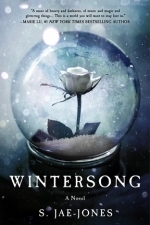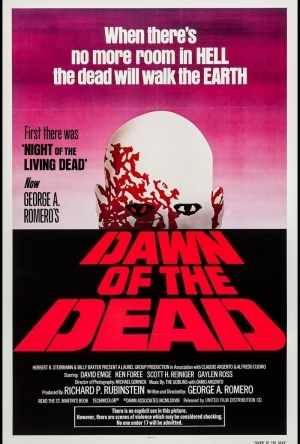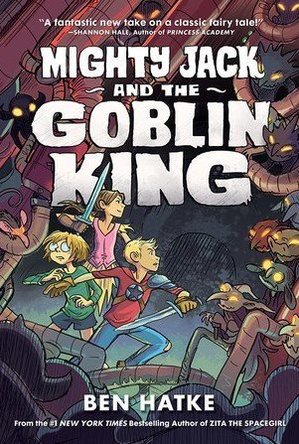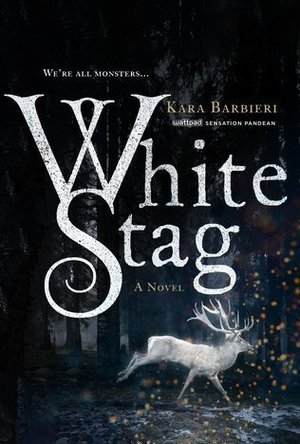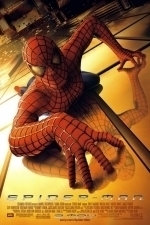Search
Goddess in the Stacks (553 KP) rated Wintersong in Books
Dec 27, 2018
So I knew this was inspired by Jim Henson's Labyrinth. That's partially why I picked it up, as I love that movie and David Bowie as the Goblin King. I didn't expect to get, basically, Labyrinth fanfiction. That was my first impression. As the book carries on, though, and especially as you get into the second book, it's more like a musician's fever-dream of their favorite childhood movie. There are so many elements taken from the movie, but they are deconstructed and put back together in such unexpected ways.
You'll recognize a line or two from the movie. The fairies still bite. The Goblin King is still beautiful and angular and strange. Liesl's after a stolen sibling. But Liesl and her family live in rural, probably 18th century Bavaria. She is not a spoiled, baby-sitting half-sister. Her grandmother has taught her the old stories, and unbeknownst to her, she's played music for The Goblin King her entire childhood.
The first book concerns Liesl's first foray into the Underground to save her sister when The Goblin King steals her to be his bride. This is where the acid trip starts. If you're familiar with Labyrinth, remember the ballroom scene? With people whirling about and appearing and disappearing and mirrors and the sense of disorientation as it all falls apart? Yeah, that's basically the entire time in the Underground. Though there is a ball scene, and it is especially trippy.
While Liesl manages to save her sister (that's a spoiler, but it isn't much of one), she has a harder time saving herself. Whether she actually does or not could be debated.
The second book of the duology, Shadowsong, has an interesting author's note in the front of it. The author first gives a content warning for self-harm, suicidal ideations, addiction, and reckless behaviors. She goes on to say Liesl has bipolar disorder, and further, that so does she. (The author.) She says Wintersong was her bright mirror, and Shadowsong her dark one. I can see that. Wintersong is a much happier book than Shadowsong, but the story would be incomplete without both books. Wintersong does end in a satisfactory conclusion, but Shadowsong just completes the tale in a way that I, at least, really enjoyed.
Shadowsong also contains more throwbacks to the movie - she falls and is caught by goblin hands; goblins form a giant face that talks to her about the old laws. These things don't happen in the same scene, though.
I loved the elements of music woven throughout the story; Liesl is a composer, and music - her music - is almost a character in its own right. It's definitely a huge plot element. It's in her connection to her brother, and her connection to The Goblin King. It's her way into the Underground, and her way out, and her way to reach back in.
It's an enchanting duology; I don't know if it would be as good for someone who didn't love Labyrinth the way I do. If you dislike the movie, I would probably advise against reading these. But if you like it or have simply never seen it, these would be good, atmospheric books to read in the dead of winter.
You can read all my reviews at http://goddessinthestacks.com
You'll recognize a line or two from the movie. The fairies still bite. The Goblin King is still beautiful and angular and strange. Liesl's after a stolen sibling. But Liesl and her family live in rural, probably 18th century Bavaria. She is not a spoiled, baby-sitting half-sister. Her grandmother has taught her the old stories, and unbeknownst to her, she's played music for The Goblin King her entire childhood.
The first book concerns Liesl's first foray into the Underground to save her sister when The Goblin King steals her to be his bride. This is where the acid trip starts. If you're familiar with Labyrinth, remember the ballroom scene? With people whirling about and appearing and disappearing and mirrors and the sense of disorientation as it all falls apart? Yeah, that's basically the entire time in the Underground. Though there is a ball scene, and it is especially trippy.
While Liesl manages to save her sister (that's a spoiler, but it isn't much of one), she has a harder time saving herself. Whether she actually does or not could be debated.
The second book of the duology, Shadowsong, has an interesting author's note in the front of it. The author first gives a content warning for self-harm, suicidal ideations, addiction, and reckless behaviors. She goes on to say Liesl has bipolar disorder, and further, that so does she. (The author.) She says Wintersong was her bright mirror, and Shadowsong her dark one. I can see that. Wintersong is a much happier book than Shadowsong, but the story would be incomplete without both books. Wintersong does end in a satisfactory conclusion, but Shadowsong just completes the tale in a way that I, at least, really enjoyed.
Shadowsong also contains more throwbacks to the movie - she falls and is caught by goblin hands; goblins form a giant face that talks to her about the old laws. These things don't happen in the same scene, though.
I loved the elements of music woven throughout the story; Liesl is a composer, and music - her music - is almost a character in its own right. It's definitely a huge plot element. It's in her connection to her brother, and her connection to The Goblin King. It's her way into the Underground, and her way out, and her way to reach back in.
It's an enchanting duology; I don't know if it would be as good for someone who didn't love Labyrinth the way I do. If you dislike the movie, I would probably advise against reading these. But if you like it or have simply never seen it, these would be good, atmospheric books to read in the dead of winter.
You can read all my reviews at http://goddessinthestacks.com
Goddess in the Stacks (553 KP) rated Shadowsong (Wintersong #2) in Books
Dec 27, 2018
So I knew this was inspired by Jim Henson's Labyrinth. That's partially why I picked it up, as I love that movie and David Bowie as the Goblin King. I didn't expect to get, basically, Labyrinth fanfiction. That was my first impression. As the book carries on, though, and especially as you get into the second book, it's more like a musician's fever-dream of their favorite childhood movie. There are so many elements taken from the movie, but they are deconstructed and put back together in such unexpected ways.
You'll recognize a line or two from the movie. The fairies still bite. The Goblin King is still beautiful and angular and strange. Liesl's after a stolen sibling. But Liesl and her family live in rural, probably 18th century Bavaria. She is not a spoiled, baby-sitting half-sister. Her grandmother has taught her the old stories, and unbeknownst to her, she's played music for The Goblin King her entire childhood.
The first book concerns Liesl's first foray into the Underground to save her sister when The Goblin King steals her to be his bride. This is where the acid trip starts. If you're familiar with Labyrinth, remember the ballroom scene? With people whirling about and appearing and disappearing and mirrors and the sense of disorientation as it all falls apart? Yeah, that's basically the entire time in the Underground. Though there is a ball scene, and it is especially trippy.
While Liesl manages to save her sister (that's a spoiler, but it isn't much of one), she has a harder time saving herself. Whether she actually does or not could be debated.
The second book of the duology, Shadowsong, has an interesting author's note in the front of it. The author first gives a content warning for self-harm, suicidal ideations, addiction, and reckless behaviors. She goes on to say Liesl has bipolar disorder, and further, that so does she. (The author.) She says Wintersong was her bright mirror, and Shadowsong her dark one. I can see that. Wintersong is a much happier book than Shadowsong, but the story would be incomplete without both books. Wintersong does end in a satisfactory conclusion, but Shadowsong just completes the tale in a way that I, at least, really enjoyed.
Shadowsong also contains more throwbacks to the movie - she falls and is caught by goblin hands; goblins form a giant face that talks to her about the old laws. These things don't happen in the same scene, though.
I loved the elements of music woven throughout the story; Liesl is a composer, and music - her music - is almost a character in its own right. It's definitely a huge plot element. It's in her connection to her brother, and her connection to The Goblin King. It's her way into the Underground, and her way out, and her way to reach back in.
It's an enchanting duology; I don't know if it would be as good for someone who didn't love Labyrinth the way I do. If you dislike the movie, I would probably advise against reading these. But if you like it or have simply never seen it, these would be good, atmospheric books to read in the dead of winter.
You can read all my reviews at http://goddessinthestacks.com
You'll recognize a line or two from the movie. The fairies still bite. The Goblin King is still beautiful and angular and strange. Liesl's after a stolen sibling. But Liesl and her family live in rural, probably 18th century Bavaria. She is not a spoiled, baby-sitting half-sister. Her grandmother has taught her the old stories, and unbeknownst to her, she's played music for The Goblin King her entire childhood.
The first book concerns Liesl's first foray into the Underground to save her sister when The Goblin King steals her to be his bride. This is where the acid trip starts. If you're familiar with Labyrinth, remember the ballroom scene? With people whirling about and appearing and disappearing and mirrors and the sense of disorientation as it all falls apart? Yeah, that's basically the entire time in the Underground. Though there is a ball scene, and it is especially trippy.
While Liesl manages to save her sister (that's a spoiler, but it isn't much of one), she has a harder time saving herself. Whether she actually does or not could be debated.
The second book of the duology, Shadowsong, has an interesting author's note in the front of it. The author first gives a content warning for self-harm, suicidal ideations, addiction, and reckless behaviors. She goes on to say Liesl has bipolar disorder, and further, that so does she. (The author.) She says Wintersong was her bright mirror, and Shadowsong her dark one. I can see that. Wintersong is a much happier book than Shadowsong, but the story would be incomplete without both books. Wintersong does end in a satisfactory conclusion, but Shadowsong just completes the tale in a way that I, at least, really enjoyed.
Shadowsong also contains more throwbacks to the movie - she falls and is caught by goblin hands; goblins form a giant face that talks to her about the old laws. These things don't happen in the same scene, though.
I loved the elements of music woven throughout the story; Liesl is a composer, and music - her music - is almost a character in its own right. It's definitely a huge plot element. It's in her connection to her brother, and her connection to The Goblin King. It's her way into the Underground, and her way out, and her way to reach back in.
It's an enchanting duology; I don't know if it would be as good for someone who didn't love Labyrinth the way I do. If you dislike the movie, I would probably advise against reading these. But if you like it or have simply never seen it, these would be good, atmospheric books to read in the dead of winter.
You can read all my reviews at http://goddessinthestacks.com
John Cusack recommended Dawn of the Dead (1978) in Movies (curated)
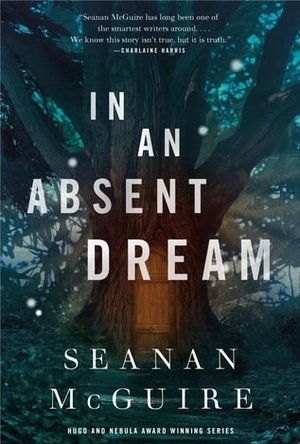
In an Absent Dream (Wayward Children, #4)
Book
This is the story of a very serious young girl who would rather study and dream than become a...
Lilyn G - Sci-Fi & Scary (91 KP) rated Mighty Jack and the Goblin King in Books
May 9, 2018
Great MG graphic novel!
Mighty Jack and the Goblin King was a great graphic novel to read with the 9 year old. I picked it up while we were in the kid’s section looking for a book for her, and decided to get it for myself even though she showed no real interest. (Actually I might have picked up a few for me.) Anyways, one night she was a bit sickly, and joined me on the couch for a cuddle. I picked up the book, figuring we’d read a few pages and then be done. I could finish it after she went back to bed. We ended up reading the whole thing in one sitting. (This isn’t exactly a thin graphic novel, either.)
This is a good ‘bedtime story’ book. There are a variety of different characters (but not too many) that are easy to give distinct voices to. Jack and Lilly are good contrasts to each other, and they’re just old enough that they’re moving past the point where boys/girls have cooties. Jack was a good kid, and on a mission to save his sister. Lilly was the one I really liked though. She was spunky and resourceful, and I feel like she was the more charismatic of the two characters. The book follows them for a while together, and then on separate missions that twine together at the end.
We have not read the first book in this series, but that did not affect our ability to enjoy Mighty Jack and the Goblin King. Hatke does a good job of making sure that he works in enough references to the first book that you get enough information to go on. This was an action-packed book that had a nice resolution. My child and I both want to see the adventures that Jack and Lilly (and maybe the sister?) get up to next.
Mighty Jack and the Goblin King is well worth picking up if your child enjoys graphic novels. Especially so if you do too.
This is a good ‘bedtime story’ book. There are a variety of different characters (but not too many) that are easy to give distinct voices to. Jack and Lilly are good contrasts to each other, and they’re just old enough that they’re moving past the point where boys/girls have cooties. Jack was a good kid, and on a mission to save his sister. Lilly was the one I really liked though. She was spunky and resourceful, and I feel like she was the more charismatic of the two characters. The book follows them for a while together, and then on separate missions that twine together at the end.
We have not read the first book in this series, but that did not affect our ability to enjoy Mighty Jack and the Goblin King. Hatke does a good job of making sure that he works in enough references to the first book that you get enough information to go on. This was an action-packed book that had a nice resolution. My child and I both want to see the adventures that Jack and Lilly (and maybe the sister?) get up to next.
Mighty Jack and the Goblin King is well worth picking up if your child enjoys graphic novels. Especially so if you do too.
Kyera (8 KP) rated Wintersong in Books
Jan 31, 2018
Wintersong is a fairytale re-telling based upon the German poem Der Erlkonig and stories of the Goblin King. The author takes a relatively short poem and breathes life into it, translating the dark words into an entire world. Liesl has heard tales of the Goblin King from her grandmother since she was a small child. Even played make-believe in the Goblin Grove with her Goblin King, but as she grew older she lost her faith in the old stories. Even her brother and sister seemed not to heed the old woman’s warnings. She warned Liesl that she must protect both siblings - she would be faced with a choice and mustn’t choose wrong.
This dire warning and her later choices set her on a journey to the Underworld. It is dark, earthy and primal, full of creatures that Liesl does not understand or trust. The land itself is well-described and forms itself within the reader’s mind. Though you would never hope to call it home, it has its own ancient and crude form of beauty.
The characters are unique, although generally not faceted or well-developed in their personalities. Perhaps our main character just does not know them as well as she believes, for her view is quite flat. Her sister, Kathe is beautiful and cares only about similarly pretty and frivolous things. Her brother, Josef is a talented musician who fears his music is a “gift” from the Devil. Her grandmother is superstitious, her mother hard-working and aloof, and her father a drunk. Sadly, we don’t get to see or experience any depth of personality, nor are they given the chance to develop over the course of the novel. As our main character is in the Underworld, the lack of development is understandable which is why I wish they were more fleshed out initially.
Liesl herself is a strange mix of traits with her love of music and composition, intense lack of confidence and anger stemming from her belief that she is ugly and unwanted. Her choices are both selfish and selfless. She is a mass of contradictions and broken beliefs. While she is an interesting character, I don’t find her to be particularly relatable. I didn’t connect with any of the characters in the novel, although I enjoyed the story itself. I’m sure there are others who would find similarities between themselves and one of the characters, making this book more impactful.
Finally, the Goblin King himself – who seems to be like two people in one. At times, we see the younger, more open man that he was and could be again while at others the cold, quick to anger Trickster of the Underworld is at the forefront. More intriguing than his present is his story, you wonder how did he become the Erlkonig? For he is not the first, nor shall he be the last. He is more human than his subjects and thus this difference is what fascinated me. I wanted that story, more than him demanding Liesl in her “entire” and her being unable to give of herself, fully, yet.
It was an interesting story even though I didn’t particularly care for the characters. I recommend this book for older young adult/teen readers who enjoy fantasy and fairytale books. The writing is very poetic and beautifully descriptive. I don’t regret reading this book, but I also wouldn’t personally go out and buy a physical copy of it for my shelf.
This dire warning and her later choices set her on a journey to the Underworld. It is dark, earthy and primal, full of creatures that Liesl does not understand or trust. The land itself is well-described and forms itself within the reader’s mind. Though you would never hope to call it home, it has its own ancient and crude form of beauty.
The characters are unique, although generally not faceted or well-developed in their personalities. Perhaps our main character just does not know them as well as she believes, for her view is quite flat. Her sister, Kathe is beautiful and cares only about similarly pretty and frivolous things. Her brother, Josef is a talented musician who fears his music is a “gift” from the Devil. Her grandmother is superstitious, her mother hard-working and aloof, and her father a drunk. Sadly, we don’t get to see or experience any depth of personality, nor are they given the chance to develop over the course of the novel. As our main character is in the Underworld, the lack of development is understandable which is why I wish they were more fleshed out initially.
Liesl herself is a strange mix of traits with her love of music and composition, intense lack of confidence and anger stemming from her belief that she is ugly and unwanted. Her choices are both selfish and selfless. She is a mass of contradictions and broken beliefs. While she is an interesting character, I don’t find her to be particularly relatable. I didn’t connect with any of the characters in the novel, although I enjoyed the story itself. I’m sure there are others who would find similarities between themselves and one of the characters, making this book more impactful.
Finally, the Goblin King himself – who seems to be like two people in one. At times, we see the younger, more open man that he was and could be again while at others the cold, quick to anger Trickster of the Underworld is at the forefront. More intriguing than his present is his story, you wonder how did he become the Erlkonig? For he is not the first, nor shall he be the last. He is more human than his subjects and thus this difference is what fascinated me. I wanted that story, more than him demanding Liesl in her “entire” and her being unable to give of herself, fully, yet.
It was an interesting story even though I didn’t particularly care for the characters. I recommend this book for older young adult/teen readers who enjoy fantasy and fairytale books. The writing is very poetic and beautifully descriptive. I don’t regret reading this book, but I also wouldn’t personally go out and buy a physical copy of it for my shelf.
Christine A. (965 KP) rated White Stag (Permafrost, #1) in Books
Nov 14, 2018
I was provided with a complimentary copy of this book so I could give an honest review. "White Stag" introduces us to Janneke, a seventeen year old girl who is the youngest child in a family of all girls. She is raised to be the family's "male heir" and is raised as a tomboy who is taught to hunt and fight. When her village is invaded and burned down she is the only survivor. Taken captive by goblins, she must learn to live among them while struggling trying to keep hold of her humanity.
Pulled into a goblin war, Janneke must face beliefs she was taught as a child and try to fit them into her current reality. Are goblins merely monsters? Are they similar to humans? Can they feel emotions? Can they love? Can she love them? Can she love him?
While much of "White Stag" is predictable and follows the typical formula for YA books it is still entertaining and worth reading. There are a few surprises revealed along the way. Janneke is an interesting character who has to deal with growing up and falling in love with the enemy.
"White Stag" is the first novel in the Permafrost series by Kara Barbieri. No publication date is listed on Goodreads for the sequel, "Goblin King".
Pulled into a goblin war, Janneke must face beliefs she was taught as a child and try to fit them into her current reality. Are goblins merely monsters? Are they similar to humans? Can they feel emotions? Can they love? Can she love them? Can she love him?
While much of "White Stag" is predictable and follows the typical formula for YA books it is still entertaining and worth reading. There are a few surprises revealed along the way. Janneke is an interesting character who has to deal with growing up and falling in love with the enemy.
"White Stag" is the first novel in the Permafrost series by Kara Barbieri. No publication date is listed on Goodreads for the sequel, "Goblin King".
David McK (3649 KP) rated Spider-Man (2002) in Movies
Oct 3, 2021
"Remember, Peter: with great power comes great responsibility"
2002.
So that's back before the Marvel Cinematic Universe was a thing (Iron Man was '08).
It's also not long after the twin Towers disaster, which - I believe - had to be edited out of this film.
This was also the first big-screen take on Spider-Man, with a mainly 20 something cast all playing characters in their late teens, headlined by Tobey Maguire as Peter Parker/Spider-Man and by Kirsten Dunst's redhead Mary-Jane Watson.
The early portions of this movie basically retells Spider-Mans origins story (although, here, Parker is bitten by a Genetically modified Spider instead of a Radioactive one and does not need web-shooters: they come out of his actual wrists), complete with the death of Uncle Ben who gets to utter the immortal lines to Parker that 'with great power comes great responsibility'.
Yes, Stan Lee makes a 'blink and you'll miss it' cameo.
Yes, the soundtrack owes a fair deal to that of 1989s 'Batman'
Yes, the Green Goblin costume does look a bit like a Power Rangers reject.
Yes, the film still holds up nearly 20 year later: there's a reason that 'upside-down' kiss is now iconic!
(Oh, and TK Simmons J Jonah Jameson? *Chef's Kiss*.)
So that's back before the Marvel Cinematic Universe was a thing (Iron Man was '08).
It's also not long after the twin Towers disaster, which - I believe - had to be edited out of this film.
This was also the first big-screen take on Spider-Man, with a mainly 20 something cast all playing characters in their late teens, headlined by Tobey Maguire as Peter Parker/Spider-Man and by Kirsten Dunst's redhead Mary-Jane Watson.
The early portions of this movie basically retells Spider-Mans origins story (although, here, Parker is bitten by a Genetically modified Spider instead of a Radioactive one and does not need web-shooters: they come out of his actual wrists), complete with the death of Uncle Ben who gets to utter the immortal lines to Parker that 'with great power comes great responsibility'.
Yes, Stan Lee makes a 'blink and you'll miss it' cameo.
Yes, the soundtrack owes a fair deal to that of 1989s 'Batman'
Yes, the Green Goblin costume does look a bit like a Power Rangers reject.
Yes, the film still holds up nearly 20 year later: there's a reason that 'upside-down' kiss is now iconic!
(Oh, and TK Simmons J Jonah Jameson? *Chef's Kiss*.)
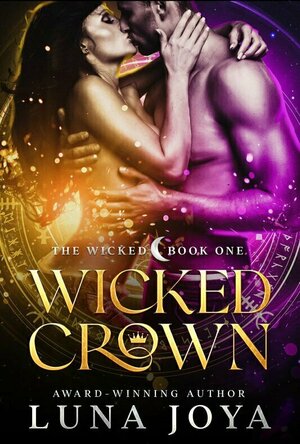
Wicked Crown (The Wicked, #1)
Book
She's not who-or what-she appears to be. Neither is he. Supermodel Vori would be happy to stay in...
Urban Fantasy Paranormal Romance Fake Relationship Royalty Bad Boy
Auburn (57 KP) rated White Stag (Permafrost, #1) in Books
Apr 10, 2019
A compelling new story that takes the nuance of Cruel prince and the lore of Goblin King. Fans of strong characters and women who can take on the world will love this read.
Soren and Janneka make the perfect pair to take on the world. Their companionship and fight through the book is commendable. This permafrost world is so well developed that it takes a bit of time to understand the plot. The characters had their own fears and you developed warmth for the odd man out.
*Warning of slight trigger warning for rape is advised. There is no full discussion but alluded to and the scars it leaves behind are in the plot multiple times.
Soren and Janneka make the perfect pair to take on the world. Their companionship and fight through the book is commendable. This permafrost world is so well developed that it takes a bit of time to understand the plot. The characters had their own fears and you developed warmth for the odd man out.
*Warning of slight trigger warning for rape is advised. There is no full discussion but alluded to and the scars it leaves behind are in the plot multiple times.
